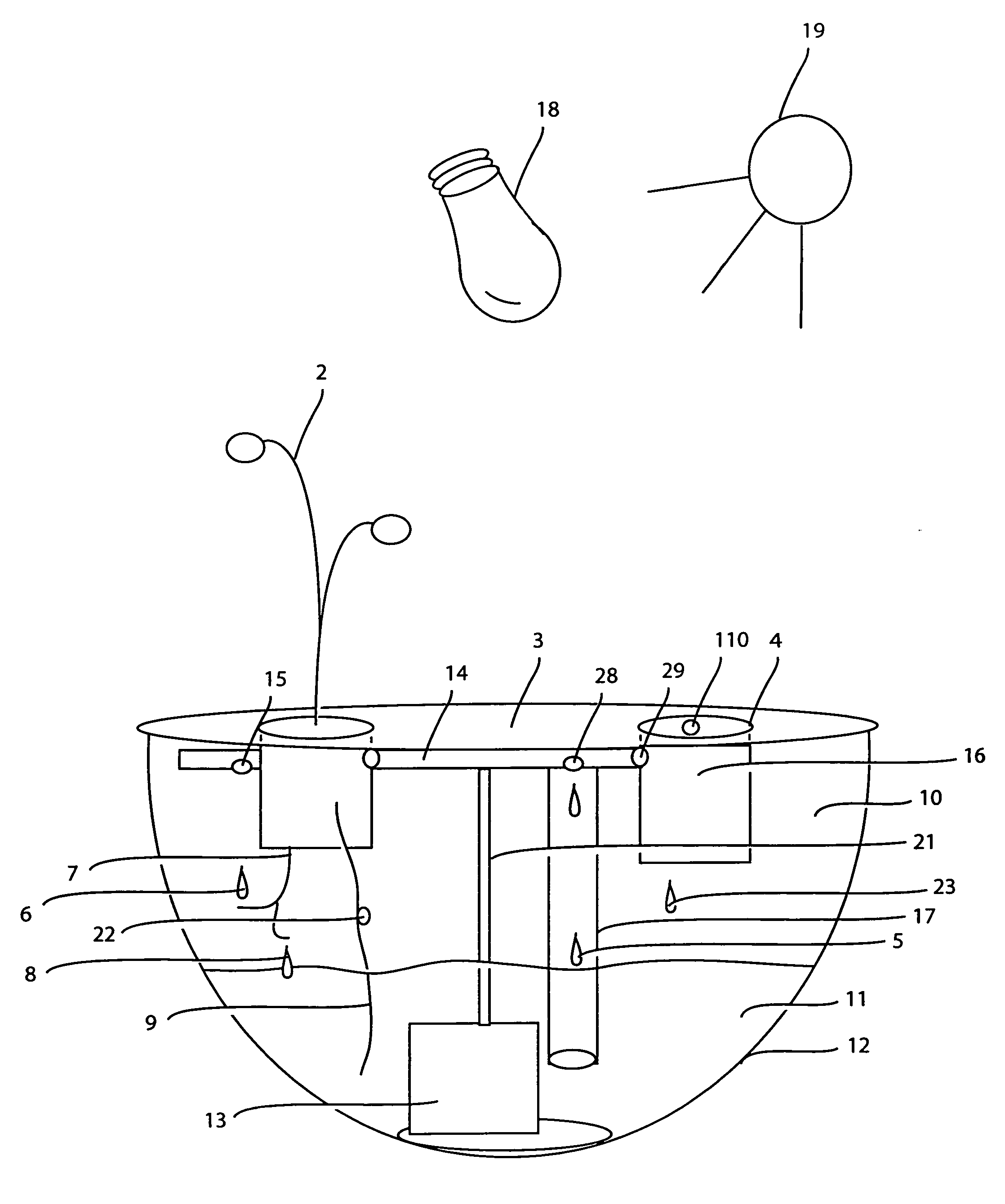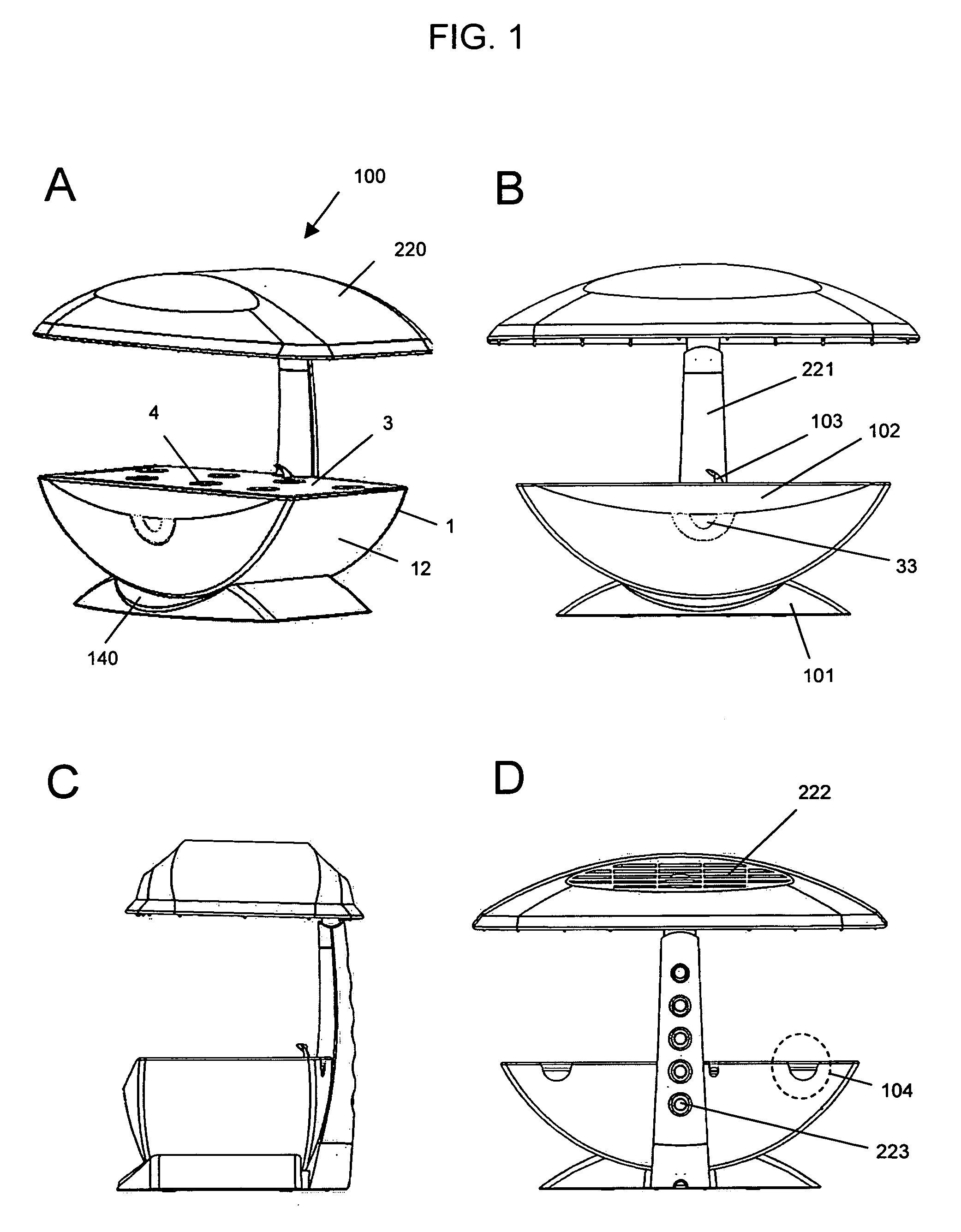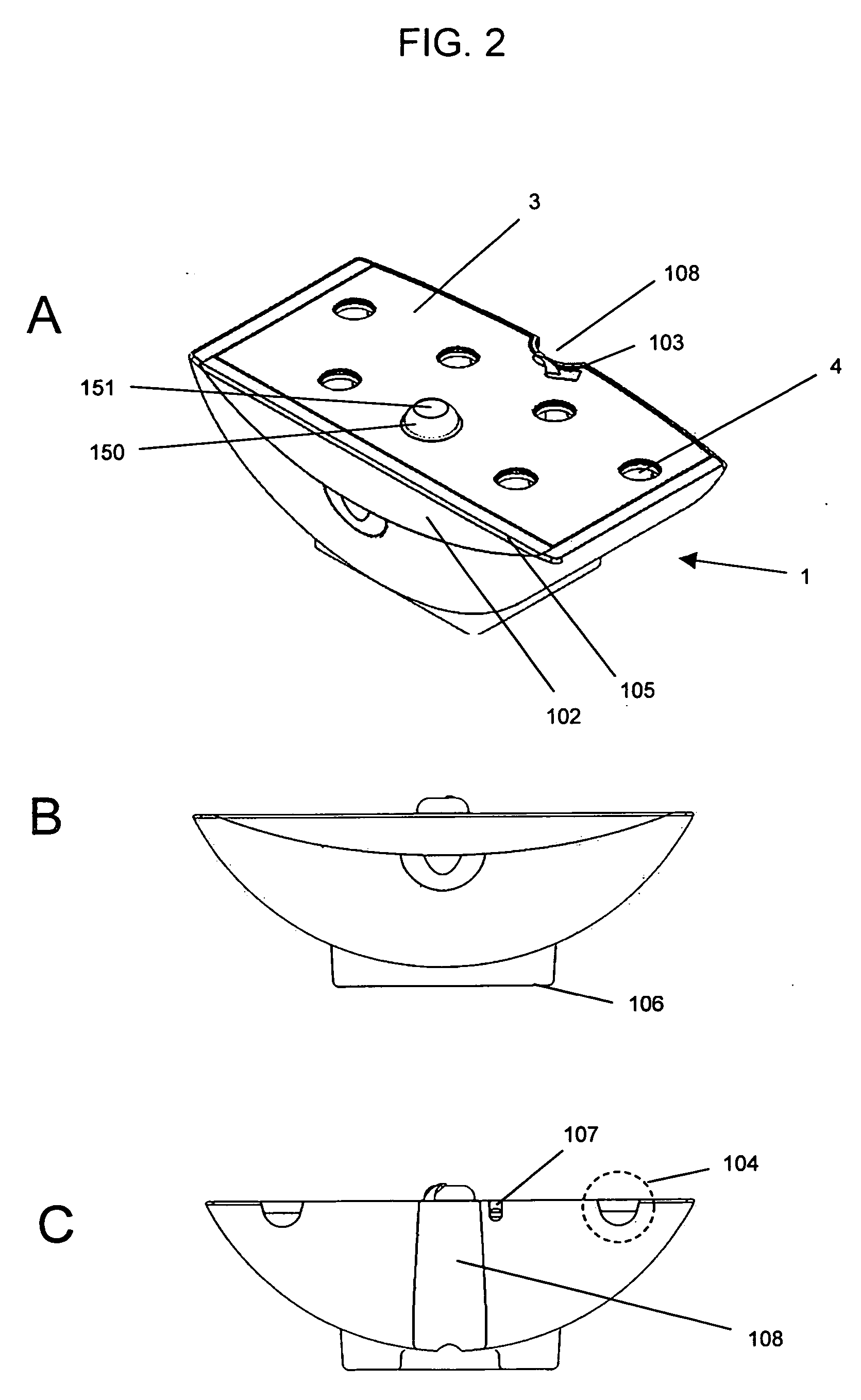Devices and methods for growing plants
a technology for growing devices and plants, applied in the field of plant agriculture, home gardening, indoor gardening, hydroponics, etc., can solve the problems of limited plant growth, low amount of oxygen in the solution,
- Summary
- Abstract
- Description
- Claims
- Application Information
AI Technical Summary
Benefits of technology
Problems solved by technology
Method used
Image
Examples
example 1
[0318] A hydroponics device of this invention, including terraced aerators and net baskets, as shown in FIGS. 1A-D was made. White, smooth on two sides, extruded, utility grade with virgin cap, acrylonitrile butadiene styrene (ABS) plastic was purchased from Port Plastics (Denver, Colo., USA) and Professional Plastics (Denver, Colo., USA) which were manufactured by Spartech Plastics (St. Louis, Mo., USA) or Primex Plastics Corporation (Richmond, Ind., USA). This plastic was used for the vessel, cover, base, photoradiation hood, terraced aerators, venturi, net baskets, and support stand for the cover. The plastic for the liquid level gauge float window was polyethylene terephtalate glycol (PETG). Vinyl labels were used for the smart garden panel. Circuit boards for the smart garden were purchased from Digi-Key (Thief River Falls, Minn., USA). The processor for the circuit boards was purchased from National Semiconductor (Santa Clara, Calif., USA). The transformer, 12 V DC, 300 mA, wa...
example 2
[0320] The device in FIGS. 1A-D was used to germinate and grow tomatoes. A first seed support medium containing a first variety of dwarf tomato seeds (three seeds) was placed in a plant opening in the cover shown in FIG. 4A. A second seed support medium containing a second different variety of dwarf tomato seeds (three seeds) was placed in a second plant opening in the cover. The seed-support media were placed in non-adjacent openings. The seed support media were inserted with a twisting motion, to line up the liquid inlets with the exits in the conduit. The empty openings were covered with photoradiation impermeable covers. Terraced aerators were not used. Germination caps were not used.
[0321] The cover was placed on the vessel shown in FIG. 4B. The covered vessel was placed in a photoradiation stand shown in FIGS. 9A-D and arranged on a kitchen counter, in ordinary air. Electrical contacts connected the vessel, cover, and photoradiation apparatus. The photoradiation apparatus con...
example 3
[0327] The device in FIGS. 1A-D is used to germinate and grow lettuce and cilantro. Four seed support media, each containing four seeds of one of four varieties of lettuce are placed in the back openings. Three seed support media, each containing four seeds of cilantro, are placed in the front three openings. Germination caps are used. Converging germination caps are used for the lettuce and diverging germination caps are used for the cilantro. An equivalent second device is set up without the germination caps. Water and nutrient are added to the devices and they are plugged in. A third device is set up with the germination caps in switched positions, so that the diverging caps are on the lettuce and the converging caps are on the cilantro. In the first device, about 100% of the seeds germinated. In the second device, about 75% of the seeds germinated. In the third device, about 50% of the seeds germinated.
PUM
 Login to View More
Login to View More Abstract
Description
Claims
Application Information
 Login to View More
Login to View More - R&D
- Intellectual Property
- Life Sciences
- Materials
- Tech Scout
- Unparalleled Data Quality
- Higher Quality Content
- 60% Fewer Hallucinations
Browse by: Latest US Patents, China's latest patents, Technical Efficacy Thesaurus, Application Domain, Technology Topic, Popular Technical Reports.
© 2025 PatSnap. All rights reserved.Legal|Privacy policy|Modern Slavery Act Transparency Statement|Sitemap|About US| Contact US: help@patsnap.com



